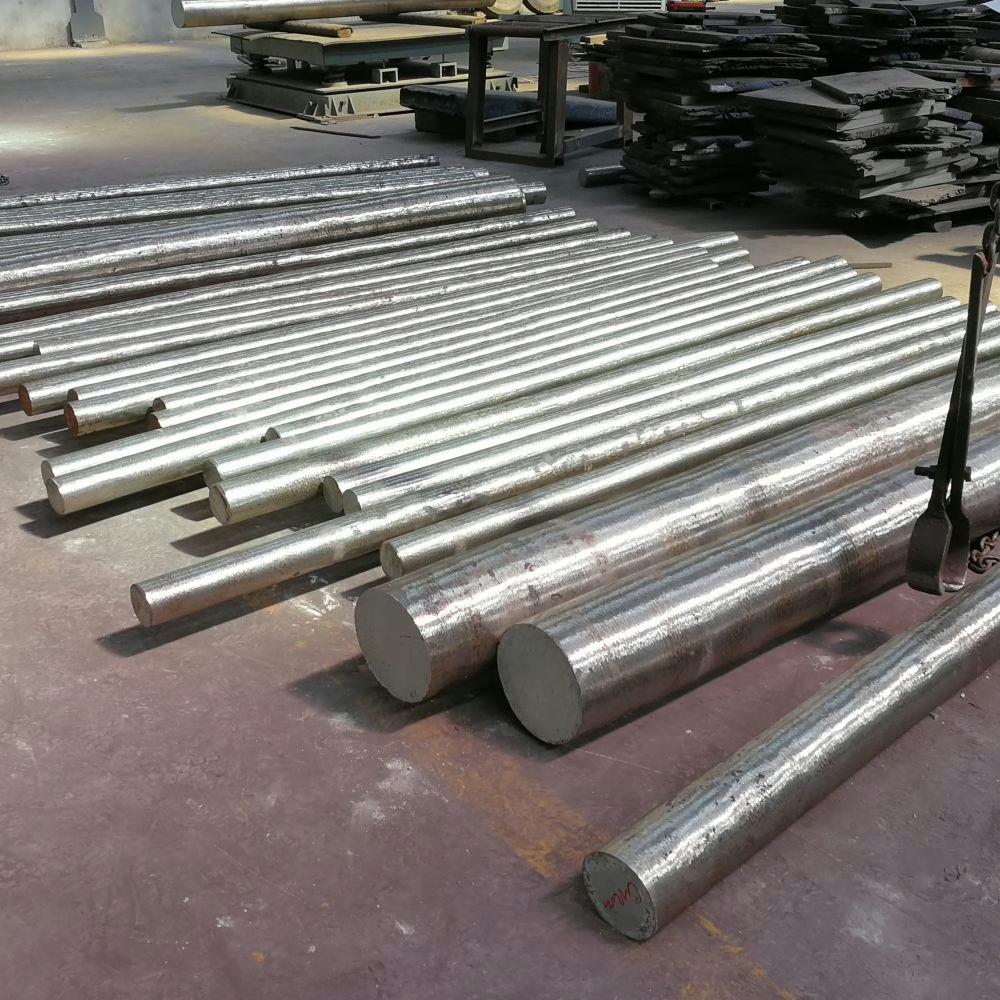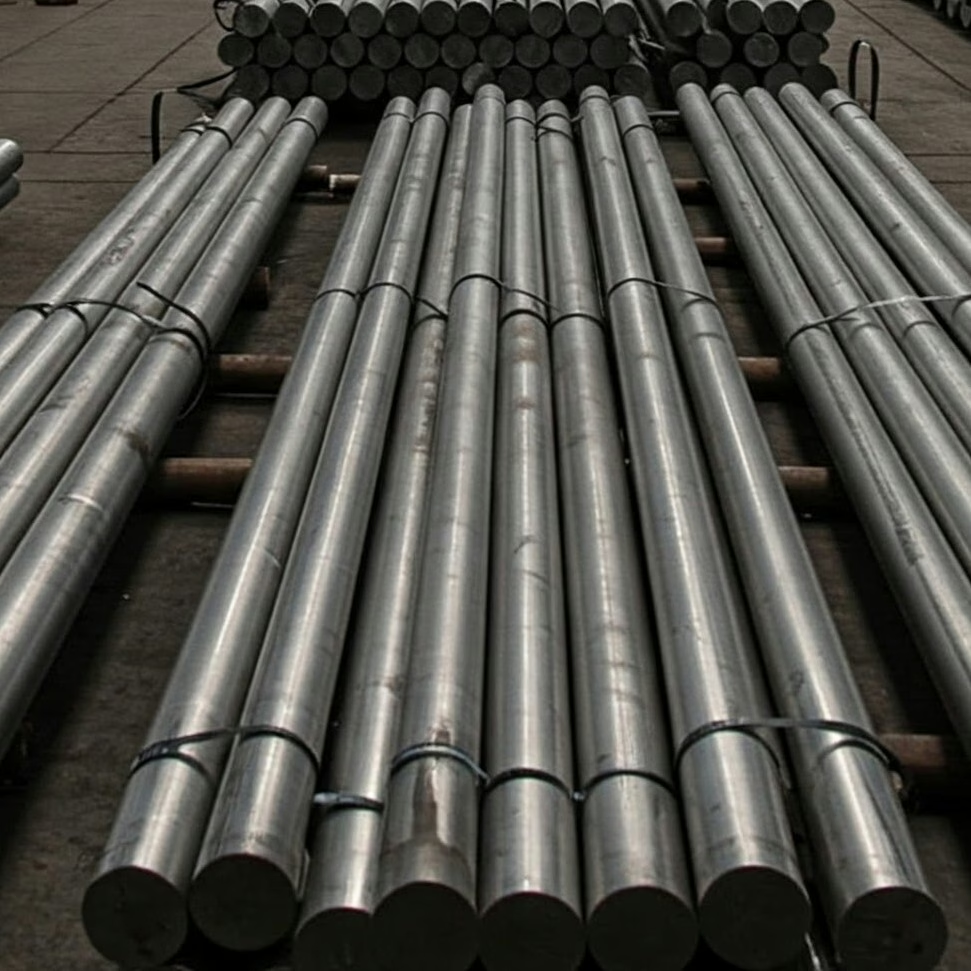
Plastik Kalıp Çelikleri Kataloğu
Plastik Kalıp Çelikleri Kataloğu
Ayrıntıları görüntülemek için herhangi bir ürüne tıklayın



Plastik Kalıp Çeliği Nedir?
Plastik kalıp çeliği, esas olarak plastik malzemelerin şekillendirilmesi ve işlenmesi için kalıp imalatında kullanılır. "P grubu çelik" olarak sınıflandırılır. AISI sınıflandırma sistemi ve EN/DIN standartlarında soğuk iş takım çeliği olarak sınıflandırılır. Plastik kalıplama işlemlerinin sıcaklığı genellikle 200°C'nin altındadır. Metal kalıplama ile karşılaştırıldığında, plastik kalıp çeliğinin ısı direnci veya aşınma direnci genellikle kritik değildir, ancak yüzey kalitesi gereksinimleri çok yüksektir.
Birçok plastik kalıp çeliği önceden sertleştirilmiş halde tedarik edilir (örneğin, 32 HRC'de P20 kaliteleri, 40 HRC'de DIN 1.2711 kaliteleri). Bu, kalıp üreticisinin son ısıl işlem yapma ihtiyacını ortadan kaldırarak bozulma riskini en aza indirir ve genel üretim süresini ve maliyetini azaltır. Önceden sertleştirilmemiş çelikler, şekillendirmeyi kolaylaştırmak için genellikle tavlanmış halde satılır ve ardından ısıl işlemle sertleştirilir.
Belirli Çelik Sınıfları
Plastik kalıplar için genellikle parçanın karmaşıklığına, üretim hacmine ve istenen yüzey kalitesine göre seçilen birkaç özel takım çeliği sınıfı kullanılır:
- P-Serisi ÇeliklerEn yaygın kaliteler P20(1.2311), P20S(1.2312) ve P20Ni(1.2738)'dir. P2, P4 ve P6 gibi düşük karbonlu kaliteler, genellikle sertleştirilmiş çelik ana göbeğin daha yumuşak bir kalıp boşluğuna yerleştirilerek baskı oluşturulduğu "göbekli" (frezeli) boşluklar için kullanılır.
- Sıcak İşlenmiş Çelikler – H13Plastik kalıplama ve döküm kalıpları için mükemmel bir kalıp çeliğidir. Mükemmel temperleme direnci, daha az çatlama eğilimi ve hava sertleştirmesiyle minimum bozulma gösterir. Daha yüksek sertliğe (>50 HRC) kadar ısıl işlem gördüğünde mükemmel cilalanabilirlik sunar ve nitrürlemeye çok iyi yanıt vererek yüksek yüzey sertliğine ulaşır.
- Martensitik Paslanmaz Çelikler–420 paslanmaz çelik ve değişikliklerÖzellikle aşındırıcı plastikler veya zorlu atmosferik koşullar için enjeksiyon kalıplarında yaygın olarak kullanılır, çünkü krom kaplamaya gerek kalmadan doğal korozyon direnci sağlar. Isıl işlemden sonra ayna parlaklığı ve iyi boyutsal kararlılık elde edebilir. Ancak, belirli bir aralıkta (425-595°C) temperleme, kırılganlığa ve korozyon direncinin kaybına neden olabilir.
- Darbeye Dayanıklı Çelikler – S7Çok yüksek darbe dayanımı gerektiren kalıplar için önerilir.
- Soğuk İş Takım Çelikleri (örn. A2, D2)Özellikle aşındırıcı plastiklerin (örneğin elyaf takviyeli plastikler) kalıplanmasında, daha yüksek aşınma direnci gerektiren uygulamalarda kullanılır.
Özellikler
- Cilalanabilirlik ve Dokulandırılabilirlik. Erimiş plastikler, kalıp yüzeyindeki en küçük ayrıntıları bile yansıtabilir ve bu da nihai ürünün görünümü için kusursuz ve kusursuz bir yüzeyin hayati önem taşımasını sağlar. Plastik kalıp çeliğinin yüksek yüzey sertliği, cilalanabilirliği önemli ölçüde artırır ve "portakal kabuğu" (yerel gerinim sertleşmesi) gibi cilalama kusurlarını en aza indirir.
- Sertlik ve MukavemetPlastik kalıp çeliğinin yüksek yüzey sertliği ve yüksek çekirdek mukavemeti, boşluğun yüksek enjeksiyon basınçları altında "çökmesini" önleyebilir. Önceden sertleştirilmiş plastik kalıpların sertliği genellikle 30-40 HRC arasında değişse de, daha yüksek aşınma direnci için karbürizasyon veya nitrürleme yoluyla yüzey sertleştirilebilirler.
- Dayanıklılık ve Şok DirenciKalıplar, çalışma sırasında (açma/kapama) mekanik darbelere ve özellikle hızlı çevrimli makinelerde hızlı ısıtma/soğutma çevrimlerinden kaynaklanan termal darbelere maruz kalır. İyi tokluk, çatlamayı önleyebilir.
- Boyutsal KararlılıkIsıl işlem sırasında bozulmayı veya boyutsal değişimi en aza indirmek hassas kalıplar için kritik öneme sahiptir
- İşlenebilirlikİşleme, toplam kalıp üretim maliyetinin önemli bir kısmını (70%'ye kadar) oluşturur. İşlenmesi daha kolay olan çelikler, genel maliyetleri önemli ölçüde azaltabilir.
- Korozyon DirenciAşındırıcı plastiklerin (örneğin, bozunduğunda HCl açığa çıkarabilen polivinil klorür (PVC)) işlenmesinde veya kalıpların nemli ortamlarda depolanmasında önemlidir.
- Kaynaklanabilirlikİyi kaynaklanabilirlik, kalıp onarımı ve bakımı için faydalıdır ve takım ömrünü uzatabilir.
Yüzey İşlemleri
- Karbürleme: Özellikle P2 ve P6 gibi düşük karbonlu kalıp çelikleri için sertliği ve aşınma direncini arttırmak amacıyla karbonun yüzeye difüzlenmesi işlemidir.
- Nitrürleme: Azotu yüzeye yayarak sertliği ve korozyon direncini önemli ölçüde artırır ve sürtünmeyi azaltır. H13 çeliği nitrürlemeye çok iyi yanıt verir.
- Krom/Nikel Kaplama: Özellikle PVC gibi agresif plastiklere karşı aşınma direnci veya korozyon koruması için uygulanabilir. Ancak, korozyona dayanıklı paslanmaz çeliklerin kullanımı kaplama ihtiyacını ortadan kaldırabilir.
- Alevle Sertleştirme: Aşınmaya veya çizilmeye maruz kalan belirli bölgelerin lokal olarak sertleştirilmesinde kullanılır.
Zorluklar ve Kusurlar
- Parlatma Kusurları: Metalik olmayan inklüzyonlardan kaynaklanan "iğne delikleri" ve aşırı parlatma sırasında oluşan lokalize sertleşmeden kaynaklanan "portakal kabuğu" görünümü içerebilir.
- Doku Sorunları: Kötü yüzey hazırlığı veya mikroyapısal homojensizlikler, düzensiz aşındırma sonuçlarına yol açabilir.
- Isıl İşlem Sırasında Bozulma: Genleşmeler, büzülmeler, eğilmeler ve şekil değişiklikleri meydana gelebilir, bu da hassas kontrol ve ideal olarak önceden sertleştirilmiş veya hava ile sertleştirilmiş sınıfların kullanımını gerektirir.
Uygulamalar
Termoplastiklerin Enjeksiyon Kalıplama
Termoset Plastiklerin Basınçlı Kalıplanması
Üfleme Kalıplama ve Ekstrüzyon
Pres Döküm Kalıpları: Kalay, çinko ve kurşun alaşımları gibi düşük erime noktalı alaşımlar için kullanılır.
Cam Ürün Kalıpları: Bazı kalıp çelikleri cam üretiminde de kullanılır ve yüksek aşınma direnci, kireçlenmeye karşı direnç, yüksek sıcaklık dayanımı ve parlatılabilirlik gibi özellikler gerektirir.
SSS
Plastik kalıp çeliği, plastik enjeksiyon kalıplama ve basınçlı kalıplamada kullanılan kalıpların imalatı için özel olarak tasarlanmış bir takım çeliği türüdür. Bu çelikler, mükemmel cilalanabilirlik, mikro temizlik, işlenebilirlik ve boyut kararlılığı nedeniyle tercih edilir.
Evet, plastik metale kalıplanabilir. Bu, plastiğin önceden var olan metal bileşenlerin etrafına kalıplandığı enjeksiyon kalıplama gibi işlemlerle gerçekleşir78 veya metal tozunun plastik bir bağlayıcıyla karıştırılıp kalıplandığı ve ardından sinterlendiği metal enjeksiyon kalıplama (MIM) gibi işlemlerle gerçekleşir9….
Kalıp çelikleri, başta plastikler olmak üzere çeşitli malzemelerin şekillendirilmesinde kullanılan kalıp ve kalıpların yapımında kullanılır, ayrıca metallerin dökümünde, seramik kalıplamada ve toz kalıplama işlemlerinde de kullanılır.
Kalıplarda kullanılan yaygın takım çelikleri arasında P serisi çelikler (örneğin P20, P21, P6), H serisi çelikler (örneğin H13, H12, H21, H25), A serisi (örneğin A2), D serisi (örneğin D2) ve martensitik paslanmaz çelikler (örneğin Tip 420, 17-4 PH) bulunur. Seçim, üretim hacmine, döküm özelliklerine ve gereken hassasiyete bağlıdır.
Silikonun düşük sıcaklık dayanımı nedeniyle genellikle doğrudan yüksek sıcaklıkta erimiş metal dökümüne uygun değildirler.
Birinci Sınıf Takım Çeliğiyle Rekabet Avantajınızı Elde Edin
Leverage our 20+ years of forging expertise. We don’t just sell steel; we provide tailored solutions. Contact our specialists for detailed information and a highly competitive quote.
Uzman Rehberliği Piyasa Lideri Fiyatlar
